Tom's Hardware Verdict
The Spectrix D50 DDR4-3600 C18 memory kit has a good balance of looks and performance, although we would have appreciated a little more of the latter.
Pros
- +
Decent performance
- +
Overclocking headroom
- +
Subtle design with a touch of RGB
Cons
- -
Loose XMP timings
- -
Expensive when not on sale
Why you can trust Tom's Hardware
Just a few months ago, Adata expanded its Spectrix bloodline with a new series of DDR4 memory kits. Understanding that different users have different preferences, Adata opted to go down a different road with the Spectrix D50. As opposed to going all out with RGB gaudiness, the brand gave the Spectrix D50 a more refined design with just a bit of lighting to scratch that RGB itch.
The Spectrix D50 comes in multitudinous variations with capacities spanning up to 32GB, and outstanding frequencies that peak at DDR4-4800. In today's review, the tested memory kit comes in at DDR4-3600 with programmed timings of 18-20-20-42 and will vie for a spot on our list of Best RAM.

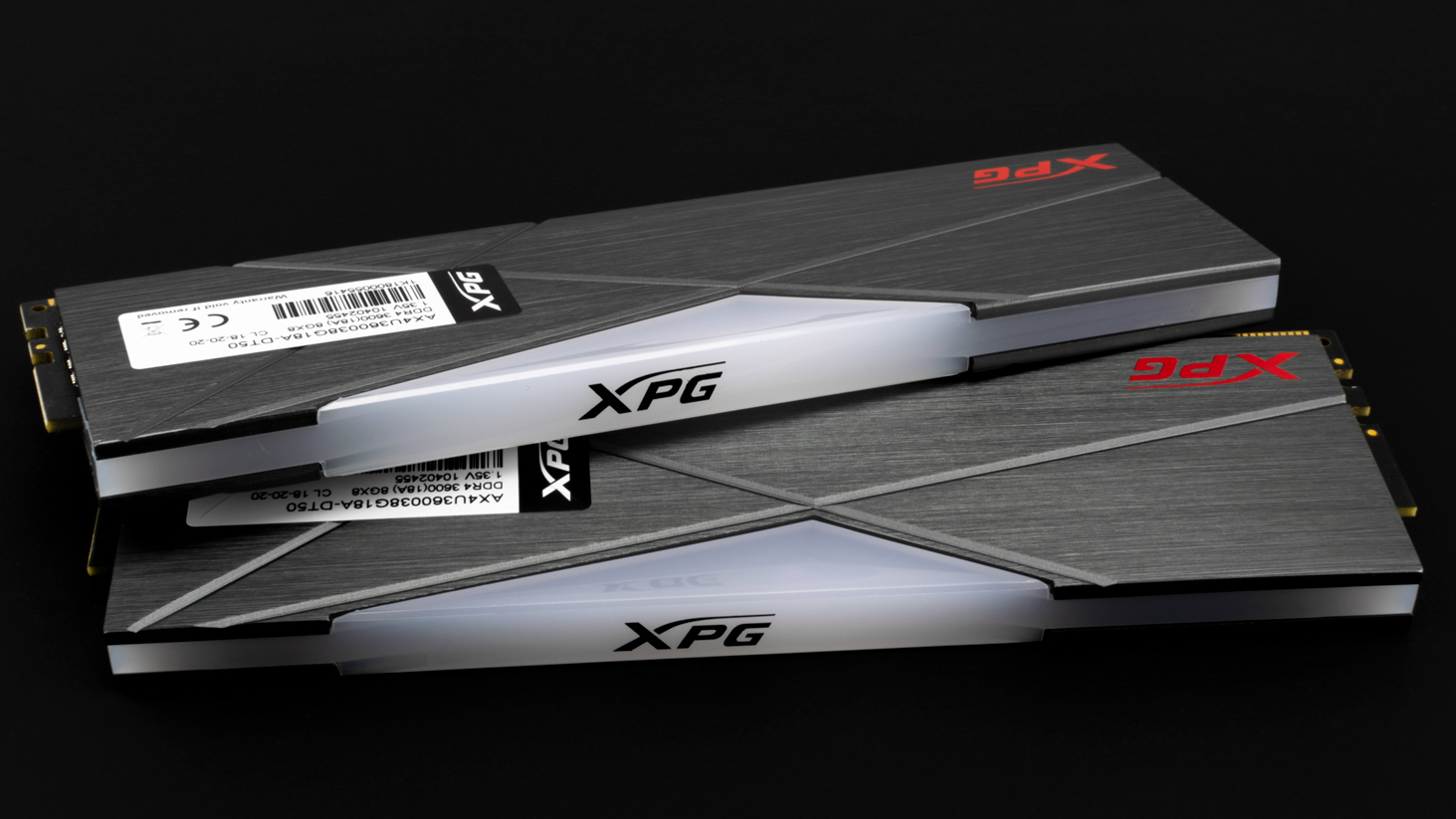

The Spectrix D50 has a relatively artful design that some will truly value. The aluminum heat spreader features a criss-cross pattern. Meanwhile, a triangular RGB diffuser on the top is sufficient enough to give the memory modules some flair. On our test kit, the heat spreader comes in a tungsten grey color. However, Adata also sells the Spectrix D50 in white for those looking to finish a white-themed build.
The Spectrix D50 checks in with a height of 43.9mm (1.73 inches). The heat spreader has a thickness of 1.95mm, which should help durability and cooling. As always, you can control the Spectrix D50's lighting through the included XPG RGB Sync App or with the software that came with your motherboard. Compatibility won't be an issue since the Spectrix D50 plays nice with all the major motherboard lighting systems, including ASRock Polychrome Sync, Asus Aura Sync, Gigabyte RGB Fusion 2.0, and MSI Mystic Light Sync.
Adata packs the Spectrix D50 memory kit with two single-rank memory modules with a capacity of 8GB each. They rest on an eight-layer PCB, featuring SpecTek-branded integrated circuits (ICs). If you haven't heard about SpecTek before, it's a subsidiary of Micron. In reality, these are MT40A1G8SA-062E:E ICs from Micron, which the hardware world commonly refers to as E-die.
The Spectrix D50 memory modules default to DDR4-2666, with the timings configured to 19-19-19-43. Adata provides two XMP profiles to choose from. The primary profile puts the memory into DDR4-3600 with 18-20-20-42 timings, while the secondary profile drops it to DDR4-3200 with tightened timings at 16-18-18-36. The DRAM voltage for both XMP profiles is 1.35V. For more on timings and frequency considerations, see our PC Memory 101 feature, as well as our How to Shop for RAM feature.
Comparison Hardware
| Memory Kit | Part Number | Capacity | Data Rate | Primary Timings | Voltage | Warranty |
|---|---|---|---|---|---|---|
| G.Skill Trident Z Neo | F4-3600C14D-16GTZNB | 2 x 8GB | DDR4-3600 (XMP) | 14-15-15-35 (2T) | 1.45 Volts | Lifetime |
| Adata XPG Spectrix D60G | AX4U360038G14C-DT60 | 2 x 8GB | DDR4-3600 (XMP) | 14-15-15-35 (2T) | 1.45 Volts | Lifetime |
| Team Group T-Force Xtreem ARGB | TF10D416G3600HC14CDC01 | 2 x 8GB | DDR4-3600 (XMP) | 14-15-15-35 (2T) | 1.45 Volts | Lifetime |
| Adata XPG Spectrix D50 | AX4U360038G18A-DT50 | 2 x 8GB | DDR4-3600 (XMP) | 18-20-20-42 (2T) | 1.35 Volts | Lifetime |
| HP V8 | 7EH92AA#ABM x 2 | 2 x 8GB | DDR4-3600 (XMP) | 18-20-20-40 (2T) | 1.35 Volts | 5 Years |
| Lexar DDR4-2666 | LD4AU008G-R2666U x 2 | 2 x 8GB | DDR4-2666 | 19-19-19-43 (2T) | 1.20 Volts | Lifetime |
Our Intel test system consists of an Intel Core i7-10700K and MSI MEG Z490 Ace with the 7C71v11 firmware. Our AMD testbed has an AMD Ryzen 5 3600 and MSI MAG B550 Tomahawk that's on the 7C91vA1 firmware. Regardless of the platform, an MSI GeForce RTX 2080 Ti Gaming Trio is in charge of display duties.
Get Tom's Hardware's best news and in-depth reviews, straight to your inbox.
Intel Performance




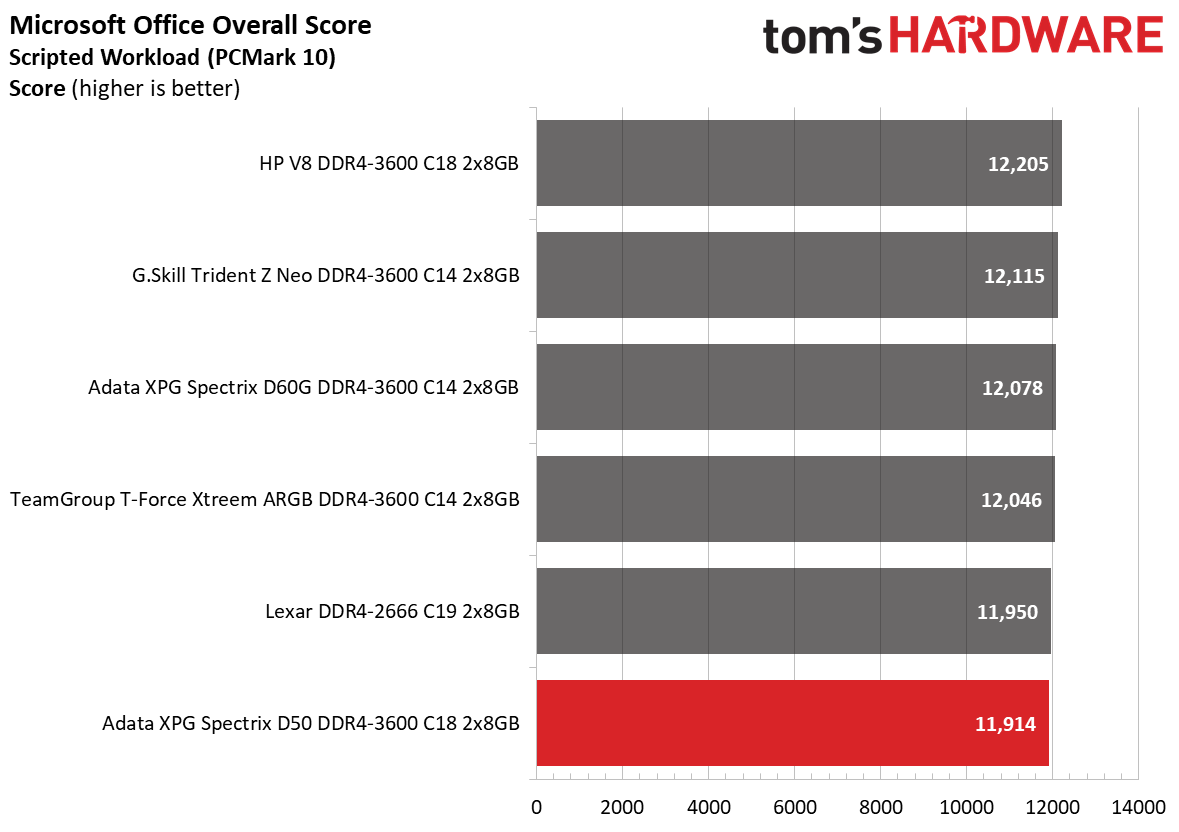









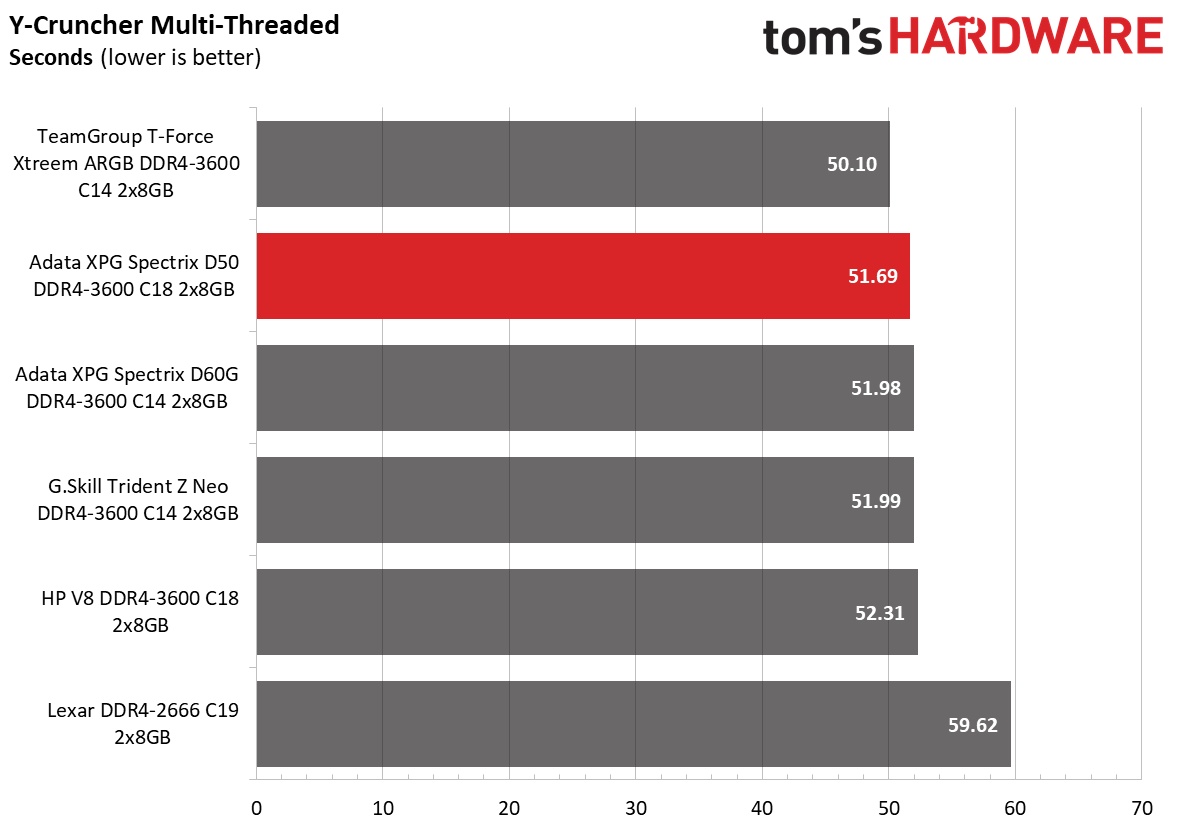
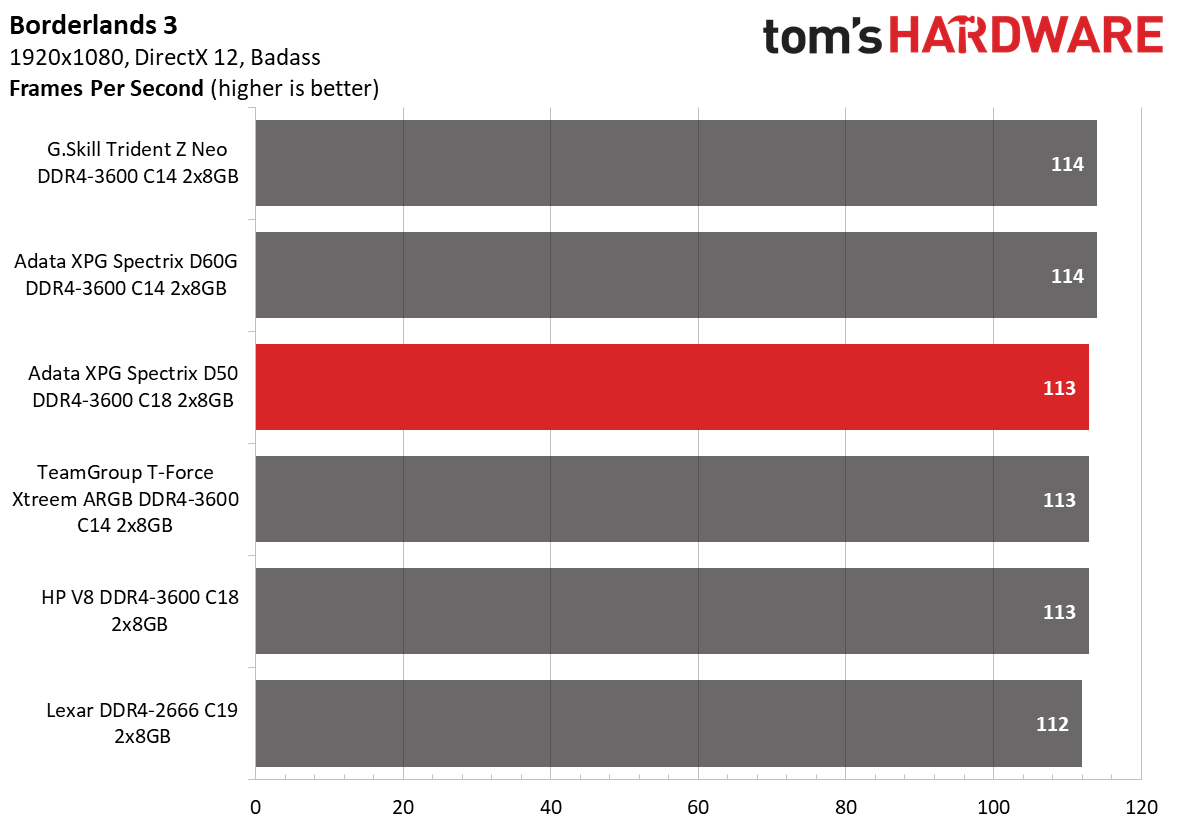
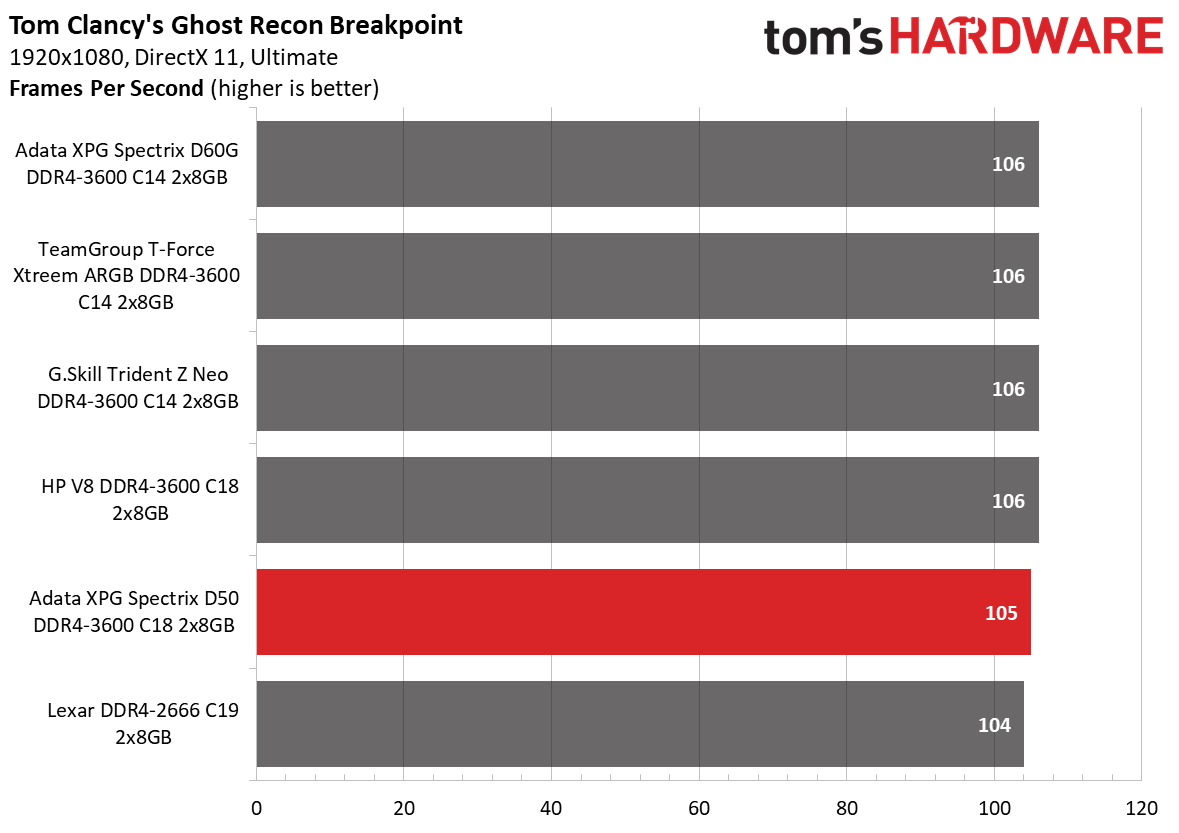


Predictably, the Spectrix D50 performed slower in both performance charts than the other DDR4-3600 kits with tighter timings. The memory kit did particularly well in the Adobe Premiere 2020 benchmark, tying for first place with the DDR4-3600 C14 kit. The Spectrix D50 placed second to last in gaming.
AMD Performance


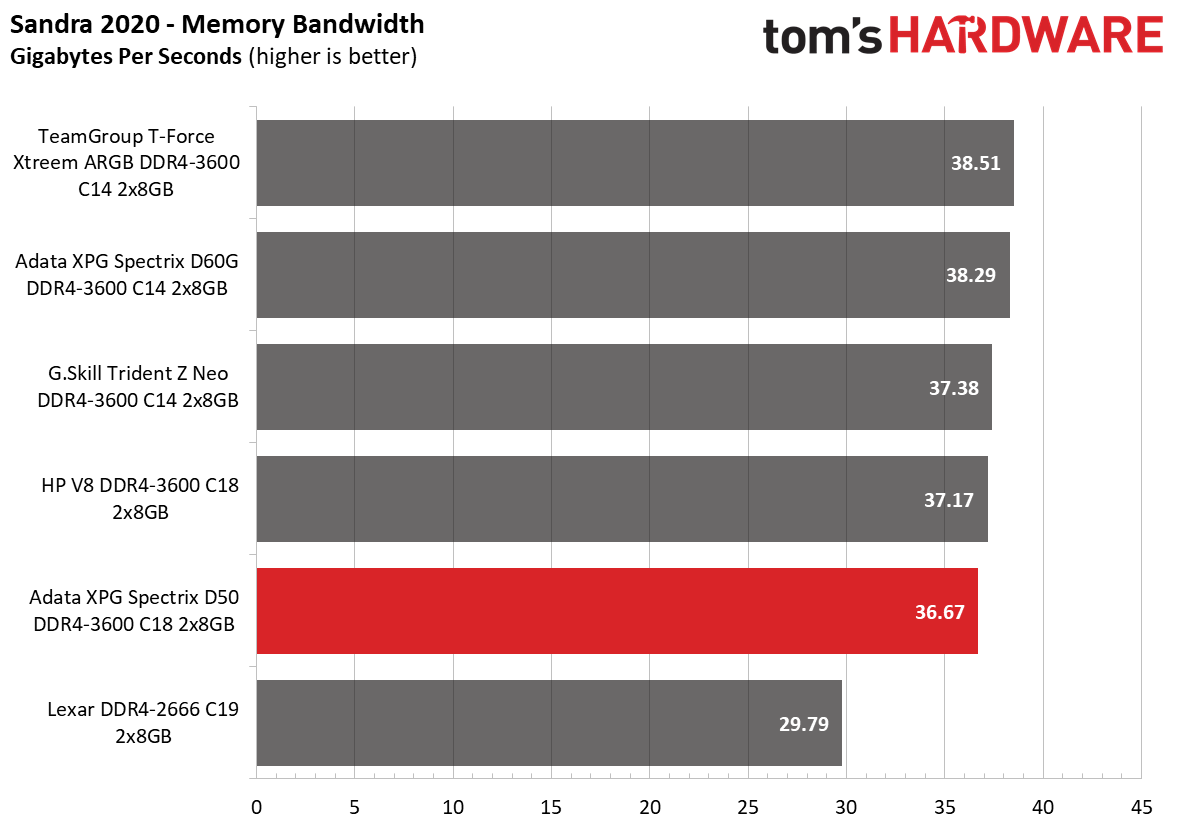

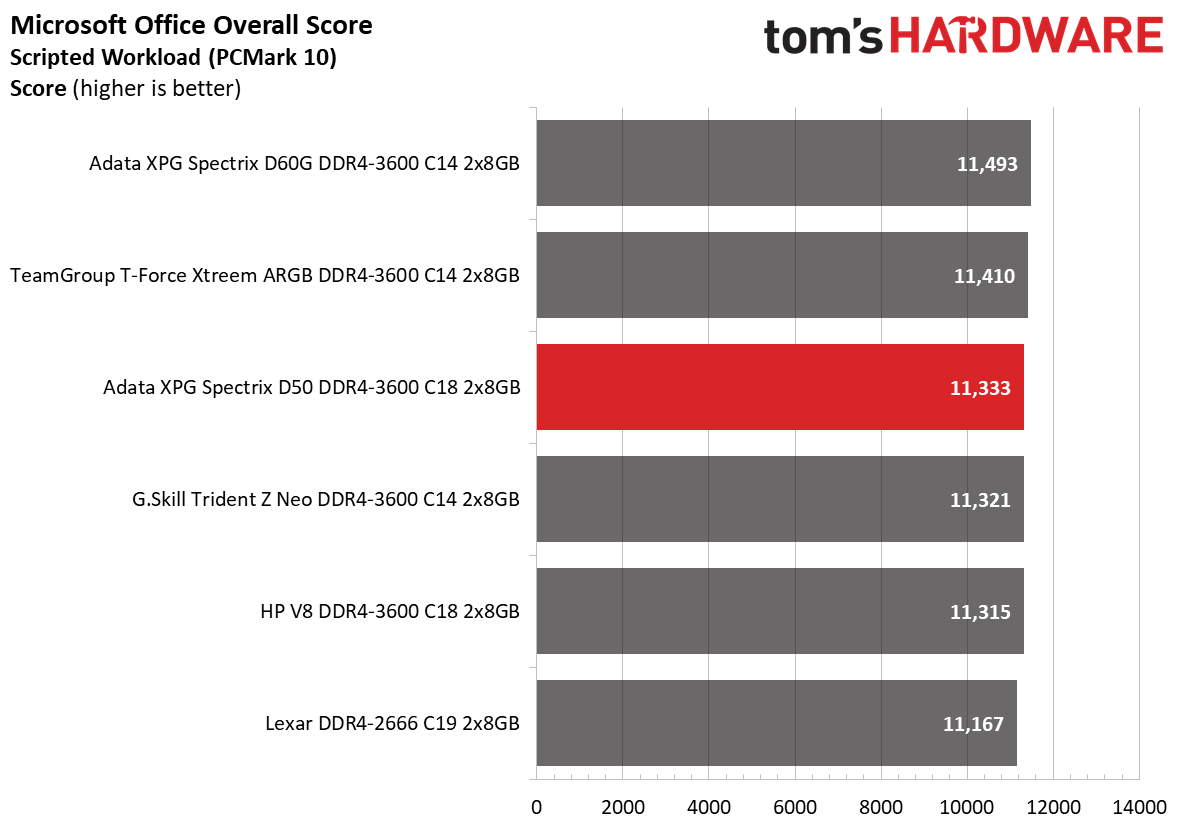














It was another story on the AMD platform, though. Overall, the Spectrix D50 came in third place in our RAM benchmarks, just edging out its kin, the Spectrix D60G DDR4-3600 C14 memory kit. Gaming performance remained unchanged as the Spectrix D50 was the penultimate memory kit.
Overclocking and Latency Tuning
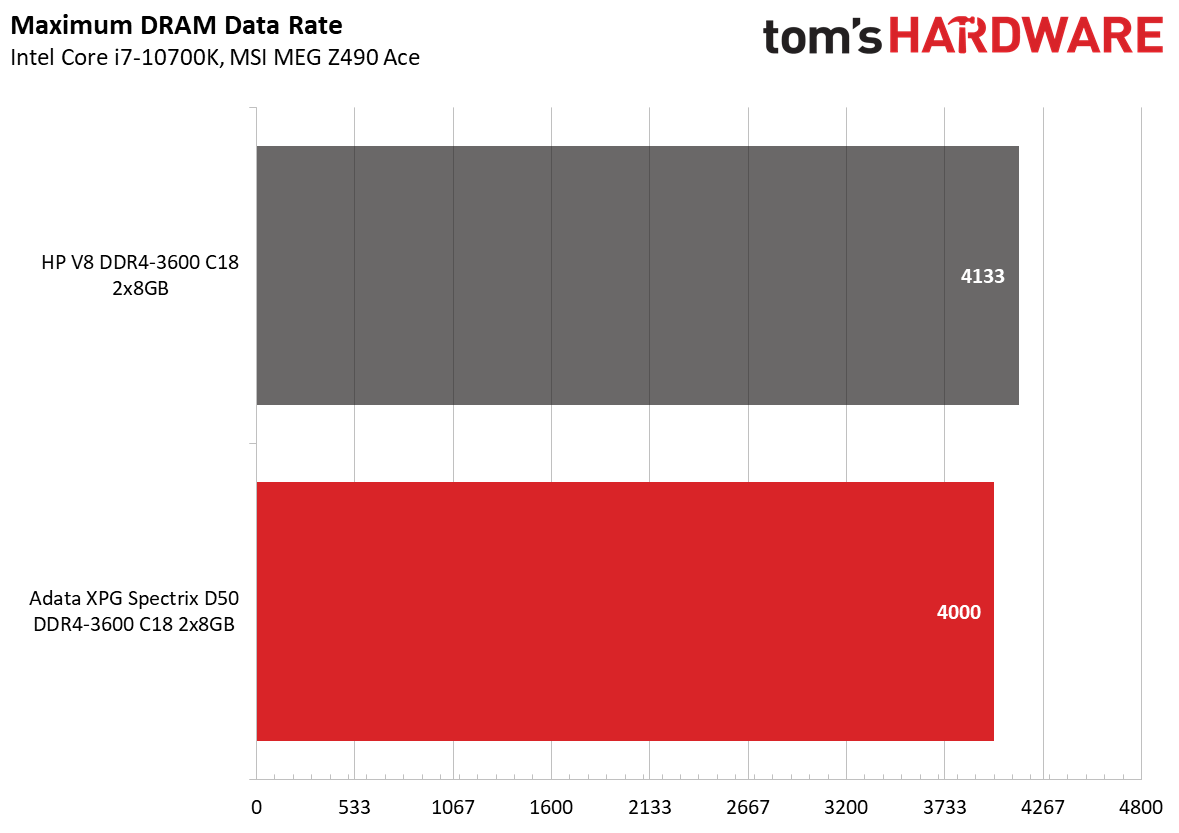

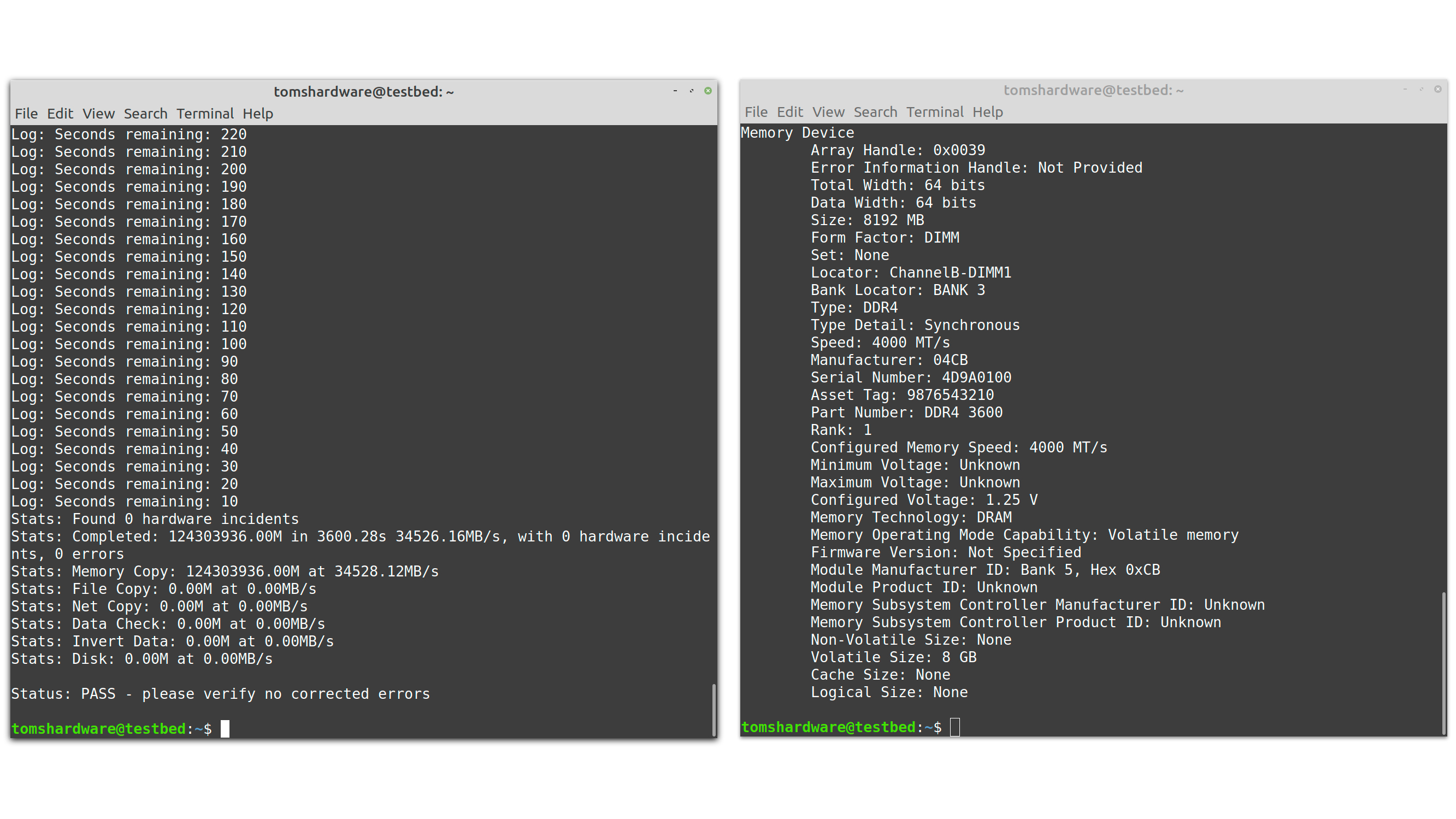
We pushed the Spectrix D50 memory kit to DDR4-4000 by upping the voltage to 1.45V and relaxing the timings to 18-22-22-42. We could maintain a CAS Latency of 18, but we had to increase the tRCD, tRP, and tRAS to stabilize the overclock.
Lowest Stable Timings
| Memory Kit | DDR4-3600 (1.45V) | DDR4-4000 (1.45V) | DDR4-4133 (1.45V) |
|---|---|---|---|
| Adata XPG Spectrix D50 DDR4-3600 C18 | 14-19-19-39 (2T) | 18-22-22-42 | N/A |
| HP V8 DDR4-3600 C18 | 14-19-19-39 (2T) | N/A | 18-22-22-42 (2T) |
We increased the DRAM voltage to 1.45V to see whether we could optimize the timings at DDR4-3600. Amazingly, the Spectrix D50 could run at a CAS Latency of 14. However, 19-19-39 were the lowest tRCD, tRP, and tRAS timings we could keep stable.
Bottom Line
The Spectrix D50 is a good example of how memory can look good without going overboard with RGB. Performance-wise, the kit's loose timings held back the Spectrix D50. If Adata had binned for C16, the memory kit would definitely be a strong contender. However, there's headroom for manual tweaking so you can work on the timings. Your mileage may vary, though.
You can find the Spectrix D50 for $89.99. Yes, there are cheaper options on the market, but not many of them have RGB, which could be important if you're chasing after the bright, pretty lights. Every once in a while, the Spectrix D50 goes on sale for as low as $79.99, which would put the memory kit in the same price range as some of the less expensive alternatives.

Zhiye Liu is a news editor, memory reviewer, and SSD tester at Tom’s Hardware. Although he loves everything that’s hardware, he has a soft spot for CPUs, GPUs, and RAM.
